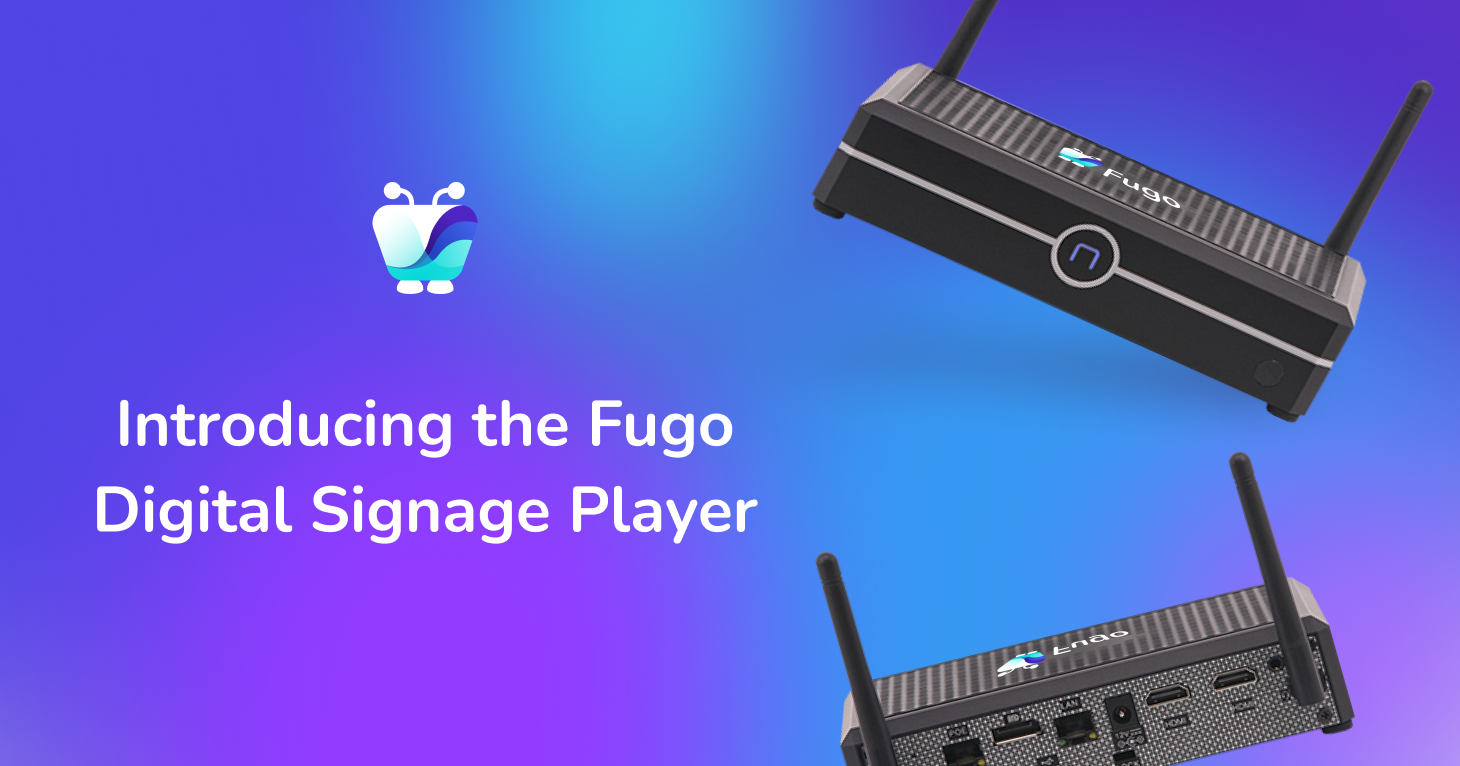
UK CMS Start-Up Fugo Bucks Larger Trend And Moves TO Windows Devices
June 27, 2023 by Dave Haynes
While much of the digital signage industry seems to be shifting to Android, dedicated devices like BrightSign and SpinetiX boxes, and special purpose operating systems for smart displays, the UK-based digital signage CMS start-up Fugo has taken the interesting step of unveiling a media player based on Microsoft’s Windows.
Since its launch in 2020, the London-based company says it has focused on affordable, entry-level consumer devices like the Amazon Fire TV stick. While such devices have gained popularity among first-time DIYers due to their accessibility and cost-effectiveness, the company argues in PR, they lack the capabilities required for enterprise-level deployments. The Fugo Digital Signage Player was developed to address these challenges head-on, providing organizations with a purpose-built and dependable solution that ensures stable performance and integration.
“This launch is a major milestone for Fugo as we expand our offerings to cater to the needs of enterprise customers,” says Zuka Kakabadze, founder and CTO of Fugo. “Recognizing the demand for a dedicated device that guarantees reliable performance, seamless integration, and robust security in large-scale deployments, we are proud to deliver this solution to our customers.”
The Fugo Player tackles the limitations commonly associated with consumer devices, such as weak performance, playback disruptions, connectivity issues, environmental wear and tear, and security vulnerabilities.
The player is based on Intel’s NUC reference design, though I dunno who makes it. The units have an Intel Jasper Lake Celeron processor and 4X the total RAM & storage of a typical Amazon Fire TV Stick. The MSRP is around $500 USD, so QUITE a bit more than a Fire TV stick.
Fugo has likely heard what all kinds of new entrants into the digital signage CMS market have heard when they start moving up the ladder from entry-level small business and education customers and start talking to IT teams. To be taken seriously, they have to move off consumer devices.
The larger trends in the industry have CMS platforms and their customers using Android, developing to smart display operating systems that are proprietary flavors of Linux or running off lean custom systems like BrightSign’s OS. Windows still gets used, but I get zero sense it is a dominant OS for signage uses.
On the other hand, Samsung recently had to open up its all-in-one kiosk to Windows because its proprietary Tizen OS is proprietary, and a barrier for companies accustomed to Windows software and Windows-based peripherals.



Leave a comment